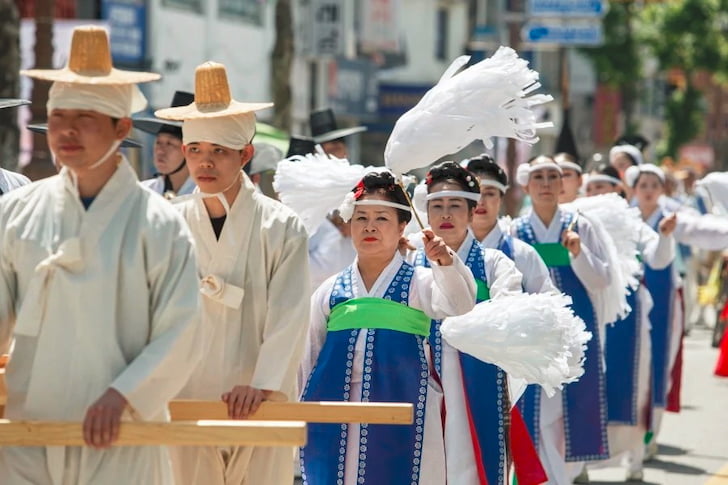Dano, also called Surit-nal, is a major holiday in both South and North Korea. The tradition of celebrating Dano in Gangneung can be traced back to the early 17th century: a mention of Gangneung Danoje dated 1603 can be found in a book by the Korean novelist, poet, and politician Heo Gyun, who was active during the Joseon period. However, the festival is presumed to have existed for much longer. Back in the day, the main purpose of this local festival was to appease the mountain god protecting the town and pray for peace and prosperity.
In 1967, the Dano Festival of Gangneung was added to the National Intangible Heritage List of South Korea, and in 2005, UNESCO designated it as part of the Masterpieces of the Oral and Intangible Heritage of Humanity of South Korea.
Preparations for Gangneung Danoje began 45 days in advance – this is how long it takes to brew a traditional sacred rice liquor for the event. It is made from rice donated by the locals with their cherished wishes. The drink is not for sale; those who have donated rice receive a bottle in return at the festival, and festival visitors are offered a free drink as a token of Gangneung’s hospitality.
The festival itself lasts for a week in June (and sometimes late May), culminating on the fifth day of the fifth lunar month. The main highlights of the Gangneung Dano Festival are traditional shamanic rituals, the Gangneung Gwanno Mask Drama, and a large marketplace called nanjang. The shamanic rituals are the quintessence of traditional performance arts, combining song, dance, music, storytelling, and costumes. They are performed by several female shamans, led by the head shaman and accompanied by a group of musicians playing the double-headed drum, gongs, and cymbals.
The Gangneung Gwanno Mask Drama is a pantomime that was traditionally performed by male and female government officials. The characters include an aristocrat (yangban), his young lover, two ruffians (sisiddakddagi), and two clowns (jangjamari), accompanied by several musicians. The play consists of five scenes and focuses on the themes of love and reconciliation, defying rigid class distinctions, fending off misfortunes, and wishing for a good harvest.
The festival market, called nanjang (“place of confusion” or “place of chaos”), offers handcrafted items and other local products from all regions of Korea. It also has an extensive entertainment program that includes circus performances, wrestling matches, traditional games and competition such as seokjeon (a stone battle) and swinging, and gift giveaways.
During the festival, visitors dress up in their finest clothes and enjoy entertainment and traditional foods such as aengdu-hwachae (cherry punch), aengdupyeon (sweet jelly made from cherries), and surichwitteok (glutinous rice cakes).

Photo: danojefestival.or.kr




